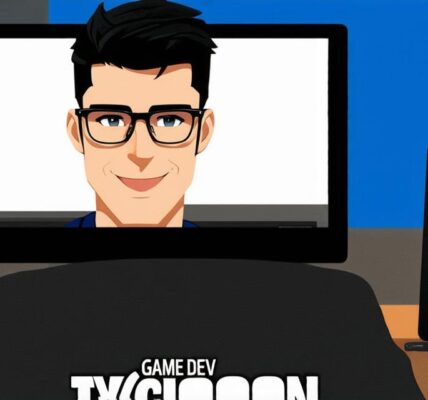Video game design is a complex and challenging field that requires creativity, technical expertise, and a deep understanding of player psychology. It involves designing interactive experiences that are engaging, immersive, and fun for players of all ages and backgrounds. While video game design can be incredibly rewarding, it is also a highly competitive and demanding industry that requires a lot of hard work, dedication, and perseverance.
In this article, we will explore the various factors that make video game design hard, including the technical challenges, creative demands, and player psychology considerations. We will also examine some real-life examples and case studies to illustrate how these factors come into play in practice. Finally, we will offer some tips and strategies for succeeding in this challenging field, based on insights from experienced video game designers.

Technical Challenges
One of the main reasons why video game design can be so difficult is because it requires a deep understanding of technology and programming. Video games are essentially software programs that run on computers or consoles, and they require a lot of technical expertise to create. This includes knowledge of programming languages like C++, Java, and Python, as well as experience with game engines like Unity and Unreal Engine.
In addition to the technical challenges, video game design also requires a strong understanding of hardware and software architecture. Video games must be optimized for specific platforms and devices, which means that designers need to be familiar with the limitations and capabilities of different hardware configurations. They also need to be able to balance performance and graphics quality in order to create smooth and enjoyable playing experiences.
Creative Demands
Another major challenge facing video game designers is the creative demands of the job. Creating a compelling game requires not only technical expertise, but also a deep understanding of storytelling, art design, music composition, and other creative disciplines. Video game designers must be able to combine all of these different elements in order to create an immersive and engaging experience for players.
This creative challenge is made even more difficult by the fact that video games are constantly evolving. New technologies, platforms, and player expectations mean that designers must stay up-to-date with the latest trends and innovations in order to create games that are relevant and exciting. This requires a lot of ongoing learning and development, as well as a willingness to take risks and try new things.
Player Psychology Considerations
One of the most important aspects of video game design is understanding player psychology. Video games are designed to be addictive and engaging, which means that designers must be able to tap into players’ emotions and motivations in order to create an enjoyable and immersive experience. This requires a deep understanding of human behavior, as well as the ability to apply psychological principles to game design.
For example, designers might use techniques like fear, reward, and social comparison to motivate players and keep them engaged. They might also use storytelling and narrative elements to create emotional connections with players, or incorporate elements of competition and cooperation to encourage teamwork and collaboration.
Real-Life Examples and Case Studies
One great way to understand the challenges facing video game designers is to look at real-life examples and case studies. There are many stories of successful and unsuccessful games that can help illustrate the complexities of the job.
For example, consider the development of “Halo: Combat Evolved.” This groundbreaking first-person shooter was created by Bungie Studios in 2001, and quickly became one of the most popular and successful games of all time. The game’s innovative multiplayer features, immersive storytelling, and high-quality graphics helped to set new standards for the video game industry, and it remains a touchstone in the world of gaming today.
On the other hand, consider the development of “Star Fox 2.” This highly anticipated sequel to the classic Nintendo game was released in 1999 to critical acclaim, but failed to gain much traction with players due to its complex and difficult-to-learn controls. Despite being a technical masterpiece, the game ultimately failed because it didn’t meet the needs and expectations of its target audience.




